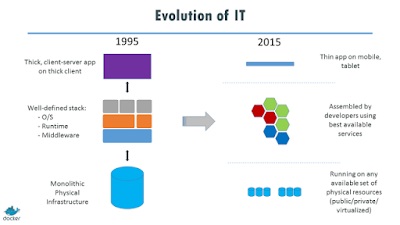How To Build Enterprise Level Web Applications
Time for product launch! You are all apprehensive, yet excited about the new web application to be launch and it is going to happen amongst bells and whistles. But something happened along the way, and the bells and whistles got replaced by smoke and fizz.
Reviews and brainstorming sessions later, you realised that the technology stack you used for building your application wasn’t the right one.
There are a number of choices for building enterprise level web applications. Here are some of them:
- Language choice? Python, Java, PHP, C, C++, CSS or something else?
- Web framework? Flask, Node.js Symphony, RoR, React, etc
- Front end option? Angular, React, VueJS, Kickstrap, Bootstrap, etc
- Database option? MySQL, Postgres, MongoDB or some other?
- Self-hosting like Apache or Nginx or Cloud like Amazon AWS or Microsoft Azure?
You have a whole lot of options while building enterprise level applications. But that’s the tip of the iceberg, and may seem like a task filled with knots. However, read through our simple article on how to unravel the knots, and you will be able to make a better choice.
Before getting into that, grasp the evolutions that has happened in technology stack recently. The changes have been rapid over the last 20 years, as you can see in this image from Docker.io
A study of the market would reveal that having a smartphone app is not the end of it. Enterprises are moving forward and have already built smart devices and wearables for improving lifestyle of the users. Even small startups are joining in the foray.
Major enterprises have already migrated to the cloud, so choosing a technology stack that caters to this is very important. They have moved to the agile approach, making large projects and long release cycles a thing of the past. This has helped them resolve most of the issues they faced previously, and release products in Faster Time to Market).
Key takeaway: Apps are rapidly evolving. The changes that have been happening over the last decade has just doubled and tripled, as new libraries and tools come up quite frequently. It important to embrace these new standards and practices to make sure your app is accepted.
1. Keep an eye on the trends
While building enterprise level web applications, it is important to look at the recent trends in this regard. This would help you build your own app. Old development trends are out the door, so it is important to keep in touch with the new ones.
2. Importance of security
Apps have been focussing on the aspect of security, true, but that’s not merely enough anyone. Most of the apps are still infused with common vulnerabilities that should have been resolved in the development stage itself.
Security breaches can spell doom for the company, remember the Yahoo security breaches? It is not easy to overcome the problems caused by a breach, so ensure all loopholes are covered.
3. A progressive enterprise web app
Progressive enterprise apps take advantage of new technologies and adapt them to serve the users better. Web applications look and feel like native apps through PhoneGap, Cordova etc. make the apps fast and engaging to the user.
4. HTTP/2 for increasing application speed
The attention span of mobile users has reduced considerably. They don’t have patience for slow applications. They wait for a few seconds, and then they close the app, and uninstall it. They always have options for faster apps. Users love apps with quick loading speeds. Hyper Text Transfer Protocol was revamped in 2015 and HTTP/2 came out. This new standard was instantly adopted, and led to faster applications.
5. Citizen development
Yes, that is right. Self-service development or citizen development is becoming the order of the day. Often, the business users bypass their IT section altogether and rely on easily accessible third-party solutions.
This practice is also known as Shadow IT, and is growing at a faster rate because companies have to meet user demand in order to remain popular. Sometimes, IT departments will not be able to handle this demand, so that’s where the third-party solutions come in.
How to make your enterprise web apps overcome the challenges
Your web app should be perfect, with no technological issues that could make them slow, bug prone and shoddy. The best option would be to use a technology portfolio that makes the apps modular, stable (no issues in the underlying platform) and simple. Here are some tricks to accomplishing that:
1. Reduce complexities
Sometimes, what tech stack was good for one project, may not be good for another one. Developers embrace technologies that deliver high levels of abstraction, but that adds complexity.
To choose a complex solution to solve a simple problem could be a bad decision, so make sure you stop and think before adding multiple layers of complexity in isolating the codes.
2. Insulating the code
Developers can define an approach where changing options of the platform have codes that are insulated. This way you can overcome the challenge of instability in codes, or incomplete core browser functionality.
3. Solid evaluation of tools
As mentioned earlier, there are many tools to build a web app. Evaluating the tools will give you a better idea of how to use the right technology. There are approaches to compare JavaScript frameworks.
The ToDoMVC app project is one such thing. It helps you know the limitations and weakness in a technology, so you will not be faced with a failure in the development process. Of course, no solution can be perfect, so it would be better to understand the limitations of the different approaches.
Closing Thoughts
In order to ensure that you build enterprise web apps of supreme quality, the developers should be encouraged to create a codebase that is easy to follow and maintain. ESLint, TSLint, and JSHint are code listing tools that would help them determine the code is structured to internal standards.
The right web application lifestyle model, for example, Agile approach is also important. This helps in placing value to collaboration and effective team work, where product quality is always maintained.
Interesting Articles:
Answers in Quroa – Which is the best Framework to use while building enterprise web applications
Check how experienced developers plan an enterprise web application
Pictures: Flickr.com/ Coghlan/ Kambanis




